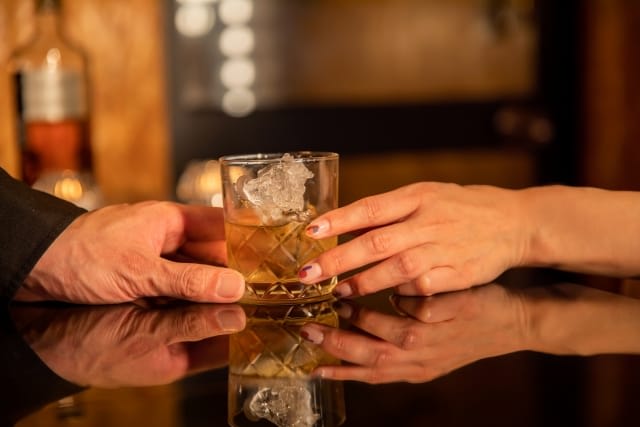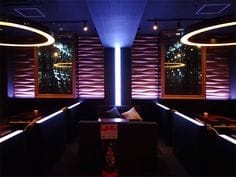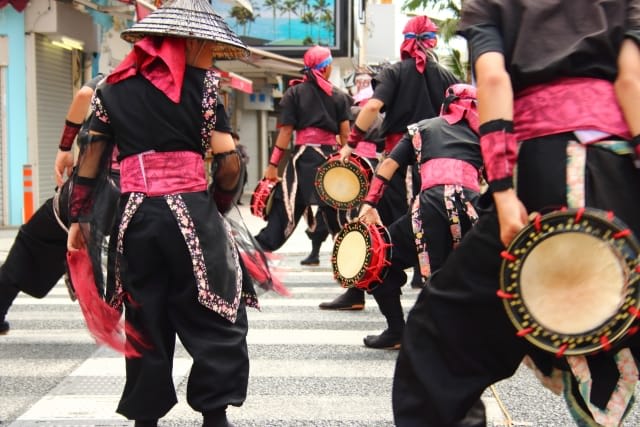Shinjuku Cabaret Clubs: Unveiling Tokyo's Vivid Nightlife Experience
Since moving to a neighborhood adjacent to Shinjuku in 2024, I've been visiting Shinjuku almost daily to explore its appeal and discover spots I can recommend to tourists. I updated this article in January 2025 to incorporate my findings from this research, along with the latest information for 2025.
Another reason for updating the article is the growing interest in tours that allow visitors to safely and deeply experience Shinjuku's nightlife. As these tours gain popularity, Magical Trip's tour, which ranked #1 among all tours on Tripadvisor, has been receiving numerous applications.

If you want to enjoy Shinjuku's nightlife, I recommend the "Tokyo Bar Hopping Night Tour in Shinjuku," which ranked #1 on Tripadvisor. Our guides who know Shinjuku inside and out will take you bar hopping while avoiding dangerous areas, allowing you to fully enjoy Shinjuku at night.
I also recommend the "Tokyo Night Foodie Tour in Shinjuku," where you can enjoy premium wagyu beef barbecue and exceptional sushi. You'll learn from food-savvy tour guides about the best ways to grill your meat and proper sushi etiquette while enjoying exquisite Japanese cuisine.
I hope you can safely and thoroughly enjoy Shinjuku's nightlife with Magical Trip's tours!
Introduction
Shinjuku is a bustling district filled with numerous department stores and restaurants, home to Kabukicho, Japan's largest entertainment area. This makes it a popular destination not only for Japanese people but also for tourists from around the world.
Shinjuku is also famous for unique spots like Golden Gai and Omoide Yokocho, which are known for their charming atmosphere and distinctive establishments.
In addition to Japan's well-known izakaya culture, there are other unique ways to enjoy nightlife. One of these is the kyabakura (cabaret club). These establishments, where women sit beside patrons to chat and drink together, are a distinctly Japanese nightlife experience.
In this article, we’ll take a closer look at kyabakura—a concept rarely found in Western countries.
If you are visiting Shinjuku, you should also visit Omoide Yokocho, which is known not only as a drinking district but also as a representative of Tokyo's retro streetscape.
You can also visit Magical Trip's ‘Tokyo Bar Hopping Night Tour in Shinjuku’, where you can soak up the uniquely Japanese atmosphere.

What is a Kyabakura?
A Unique Blend of "Cabaret" and "Nightclub"
A kyabakura is a uniquely Japanese type of establishment where female staff provide drinks and engage in conversation with customers at their tables. The term "kyabakura" is a portmanteau of "cabaret" and "nightclub," referring to the fusion of these concepts in Japan's hospitality industry.
These clubs feature a glamorous interior, offering a chance to escape everyday life by enjoying drinks and conversations with hostesses. The women working at these clubs are often called "kyabajou," meaning "ladies of the cabaret club."
What Services Does a Kyabakura Offer?
Source: Pinterest
What exactly is a hostess club? From here, we'll introduce the intriguing services and detailed pricing structure of hostess clubs.
Services
Kyabakura clubs provide a service where guests can enjoy conversations with the hostesses. After introducing themselves, the hostess prepares drinks, toasts with the guest, and engages in lively conversation over drinks.
The hostesses create a welcoming atmosphere, ensuring even first-time visitors feel at ease. Typically, the basic system includes a 60-minute session known as a "set." If you’d like to stay longer, you can pay for an extension.
The hostesses dress in glamorous outfits and sit in close proximity to the guests, creating an intimate setting. Although similar establishments like girls’ bars exist, kyabakura are characterized by their more personal and attentive service.
Operating Hours
The operating hours of kyabakura clubs are regulated by Japan's Fueiho (Entertainment Business Law), which governs businesses in the adult entertainment industry. Opening times vary by region and establishment, but most clubs open around 8:00 PM. Some may start as early as 5:00 PM.
Closing time is strictly set at midnight under Fueiho, meaning clubs cannot operate past this time. Some establishments don’t explicitly state a "LAST" or final closing time. This means they may close earlier if customer numbers decrease significantly before midnight.
Pricing Structure
The pricing system at kyabakura clubs is based on "set charges," which are time-based fees. A typical set is 50 to 60 minutes, and prices vary depending on the club's rank. The average range is ¥5,000 to ¥10,000 per set.
In addition to set charges, additional fees may apply for:
・Hostess selection fees
・Extension charges for staying beyond the initial set time
・Extra drinks or food orders
There’s also a service charge, which compensates the staff for their hospitality. This varies by club: budget-friendly establishments charge 10–20% of the total bill, while high-end clubs may charge up to 30%.
Primary Customer Demographics
Kyabakura clubs attract a wide range of male customers across various age groups. However, due to the high costs associated with these establishments, the primary clientele consists of financially stable businessmen aged 30 to 50.
These clubs often serve as a social hub for professionals after work. Notably, Shinjuku’s Kabukicho area has a higher concentration of kyabakura clubs with more affordable prices compared to upscale neighborhoods like Roppongi or Ginza.
Because of the competitive pricing in Shinjuku, younger customers are more likely to visit compared to other areas. However, tourists should remain vigilant in Kabukicho, as rip-off scams targeting foreigners are more prevalent here. Researching beforehand or asking for recommendations can help you enjoy a safe and memorable experience.
Characteristics of Kyabakura That Foreigners Often Misunderstand
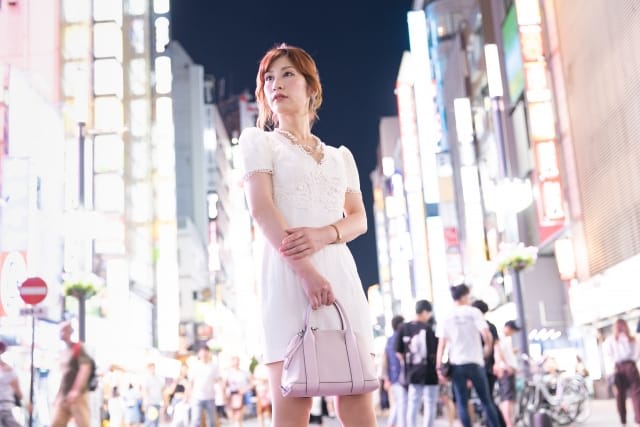
Let’s explore the characteristics of kyabakura (cabaret clubs) that foreigners often misinterpret. Use this guide to understand the rules and customs of kyabakura before visiting.
The Main Purpose: Enjoying Drinks and Conversation with Women
The primary purpose of a kyabakura is to enjoy drinks and conversation with female staff in a glamorous, non-everyday setting. Customers can chat with young women dressed in beautiful, dazzling outfits, surrounded by a luxurious interior.
While the hostesses are known for their beauty, any form of physical contact or behavior that could be considered sexual harassment is strictly prohibited.
Although alcohol is a central part of the experience, non-alcoholic drinks are available for those who don’t consume alcohol.
Conversations Are Primarily in Japanese
Kyabakura clubs typically operate with Japanese-speaking staff, so not knowing the language can limit the experience. These clubs primarily target Japanese customers, and many establishments are not equipped to accommodate non-Japanese speakers.
In recent years, however, some kyabakura clubs have adapted to welcome foreign customers. Still, there are clubs that decline foreign patrons because the system can be too complex to explain in another language.
Some Hostesses Speak English in Certain Areas
While most kyabakura hostesses do not speak English, some establishments in areas frequented by foreigners, such as Kabukicho in Shinjuku or Roppongi, employ English-speaking staff. These areas may offer a more foreigner-friendly experience, as they attract a significant number of international visitors.
In districts with a high volume of foreign tourists, English-speaking hostesses are valued and often receive higher wages. As a result, some hostesses make an effort to learn English to cater to these customers.
Limited Interaction with Other Guests
Kyabakura clubs focus on one-on-one interactions with the hostess assigned to your table, and there is little to no interaction with other guests. This minimizes the risk of conflicts and ensures an enjoyable experience focused solely on the customer and the hostess.
Hostesses dedicate their time to making drinks and engaging in conversation to ensure customers have a great time. If you’re unsure which hostess to choose, male staff can assist by recommending someone who suits your preferences.
Must-Check Tips for Choosing a Kyabakura
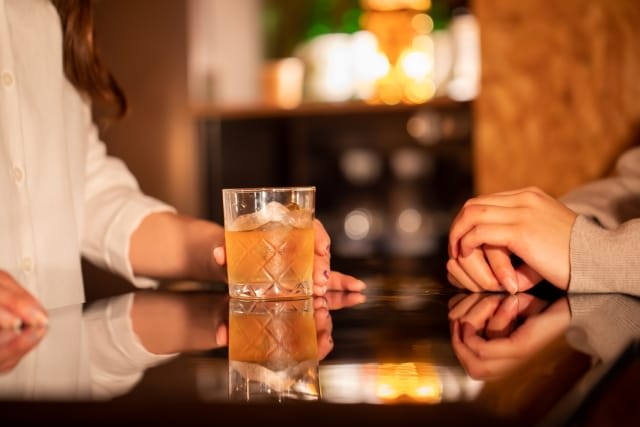
Kyabakura clubs offer a fun experience where you can enjoy drinks and conversation with hostesses. However, without proper research, you might encounter unexpected issues. Here are three important tips to keep in mind when choosing a kyabakura. If you're planning to explore Japan's kyabakura scene, let this be your guide.
1. Strong Entertainment Focus: Not Ideal for Those Seeking Dining
Unlike izakayas, kyabakura clubs are highly entertainment-focused. If you're primarily looking for dining, kyabakura may not be the best choice. While food can be ordered, offerings are generally light snacks like nuts and chips.
Some establishments provide items such as salads, pasta, or sandwiches, but prices are higher than izakayas, averaging between ¥1,000 and ¥3,000.
2. Check the Pricing Structure to Avoid High Costs
Kyabakura clubs are more expensive than regular izakayas. Without understanding the pricing structure, you could end up with a hefty bill. While the drink menu is extensive, prices are often on the higher end.
・Beer, soft drinks, and cocktails: ¥1,000–¥2,000
・Whiskey and shochu: ¥2,000–¥4,000
・Champagne and wine: Luxury brands can exceed ¥10,000
Always confirm pricing beforehand to avoid surprises.
3. Avoid Kyabakura with Street Solicitation
In entertainment hubs like Kabukicho, you may encounter staff soliciting customers on the streets. These practices are illegal, and such establishments often engage in rip-off scams, charging inflated prices for drinks and services.
To ensure a safe experience, steer clear of clubs that engage in street solicitation. Opt for reputable establishments with transparent pricing instead.
For a Safe and Immersive Night in Shinjuku: Try the “Tokyo Bar Hopping Night Tour in Shinjuku”!
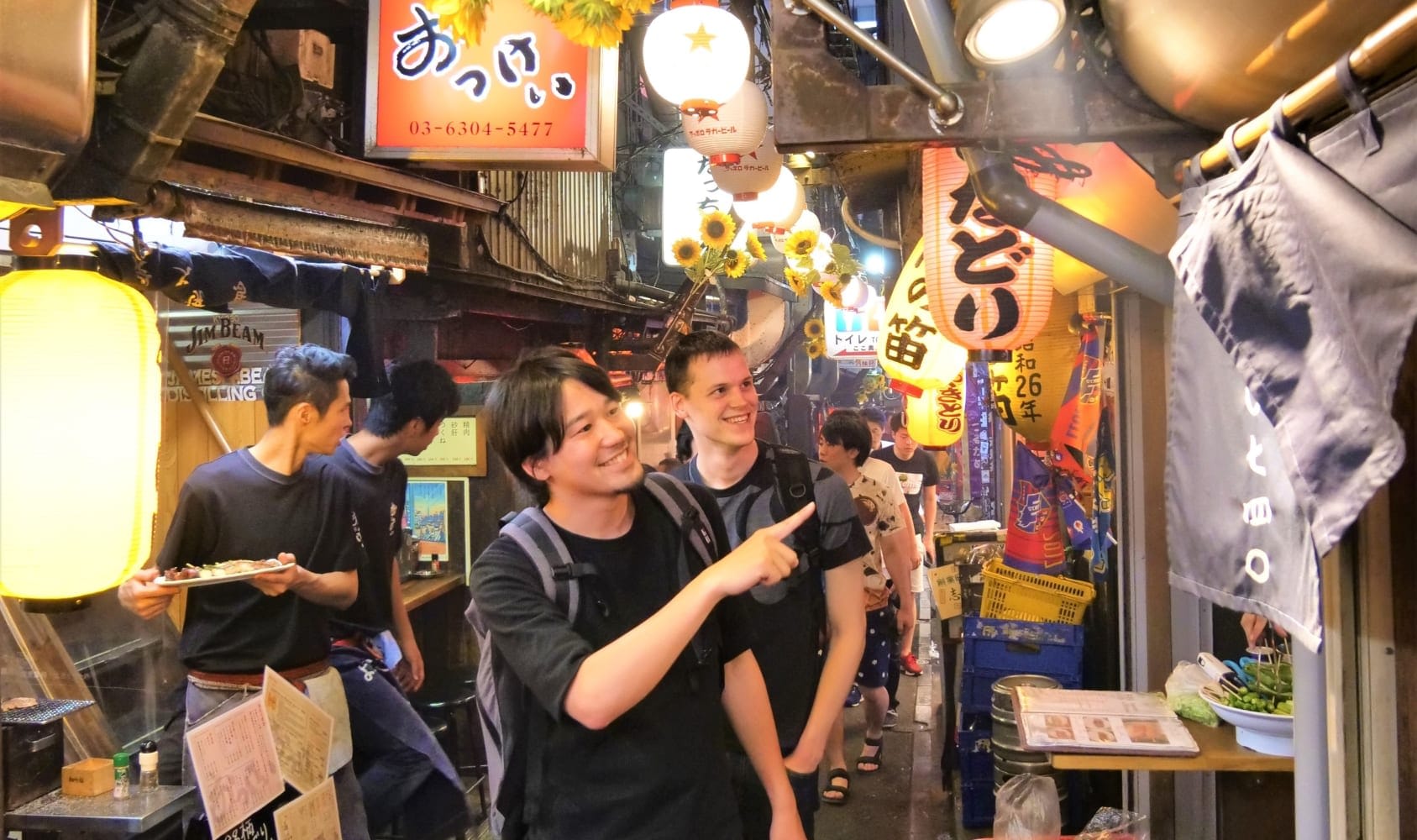
This tour takes you to three hidden bars and izakayas in Shinjuku, guided by a bilingual Japanese guide. Over 3.5 hours, you’ll explore vibrant spots around Shinjuku Station and Kabukicho, savoring delicious drinks and dishes.
Navigating Shinjuku or Kabukicho alone can be challenging due to language barriers. With this tour, your guide ensures seamless access to unique venues. The tour fee includes meals, so you can relax and enjoy the experience.
Accommodations for vegetarians and those with food allergies are also available if requested in advance.
The friendly guides are knowledgeable and eager to answer any cultural questions. If you're visiting Japan and want to deepen your understanding of its culture, this tour is highly recommended.
Meeting Point: UNIQLO Shinjuku West Exit
Tour Areas: Omoide Yokocho, Kabukicho
Start Times: 17:00 / 17:30 / 18:00 / 18:30 / 19:00
